architecture
« Quelques rĂ©flexions sur le terme « jnb »  ,
,  »
»
ENiM 5, 2012, p. 257-283.
 Cet article propose de nouveaux éléments de réflexion concernant le substantif jnb, ainsi qu’une discussion sur l’origine de l’idéogramme qui lui est associé. Les chercheurs ne s’accordent pas encore tous sur sa signification, et sa présence dans un texte est souvent interprétée comme la volonté d’évoquer une fortification ou un mur d’enceinte. L’analyse d’une sélection de documents permet d’affiner la compréhension de ce terme architectural.
Cet article propose de nouveaux éléments de réflexion concernant le substantif jnb, ainsi qu’une discussion sur l’origine de l’idéogramme qui lui est associé. Les chercheurs ne s’accordent pas encore tous sur sa signification, et sa présence dans un texte est souvent interprétée comme la volonté d’évoquer une fortification ou un mur d’enceinte. L’analyse d’une sélection de documents permet d’affiner la compréhension de ce terme architectural.
 This article proposes new interpretations of the noun jnb, as well as a discussion of the origin of the ideogram which is associated with it. Scholars still do not agree on the meaning of the term, and its presence in a text is often understood as referring to a fortification or an outer wall. An analysis of a selection of documents allows the meaning of this architectural term to be refined.
This article proposes new interpretations of the noun jnb, as well as a discussion of the origin of the ideogram which is associated with it. Scholars still do not agree on the meaning of the term, and its presence in a text is often understood as referring to a fortification or an outer wall. An analysis of a selection of documents allows the meaning of this architectural term to be refined.
 Consulter cet article (45366) -
Consulter cet article (45366) -  Télécharger cet article au format pdf (25325)
Télécharger cet article au format pdf (25325)
« Une iconographie Ă©gyptienne de l’architecture dĂ©fensive »
ENiM 7, 2014, p. 173-219.
 Cet article propose une compilation de toutes les représentations égyptiennes relatives à l’architecture défensive, de la période protohistorique à la Basse Époque. L’inventaire ainsi dressé permet en outre quelques remarques et réflexions sur certains éléments de cette iconographie, sur la manière d’interpréter les illustrations de forts, mais aussi sur les limites que nous imposent les codes artistiques égyptiens.
Cet article propose une compilation de toutes les représentations égyptiennes relatives à l’architecture défensive, de la période protohistorique à la Basse Époque. L’inventaire ainsi dressé permet en outre quelques remarques et réflexions sur certains éléments de cette iconographie, sur la manière d’interpréter les illustrations de forts, mais aussi sur les limites que nous imposent les codes artistiques égyptiens.
 This article proposes a compilation of all the Egyptian representations concerning the defensive architecture, from the Protohistoric period to the Late Period. This inventory allows some remarks and reflections on some elements of this iconography, on interpretation of the illustrations of forts, but also on the limits imposed by the Egyptian artistic codes.
This article proposes a compilation of all the Egyptian representations concerning the defensive architecture, from the Protohistoric period to the Late Period. This inventory allows some remarks and reflections on some elements of this iconography, on interpretation of the illustrations of forts, but also on the limits imposed by the Egyptian artistic codes.
 Consulter cet article (54051) -
Consulter cet article (54051) -  Télécharger cet article au format pdf (26517)
Télécharger cet article au format pdf (26517)
« The Construction Phases of the Bent Pyramid at Dahshur. A Reassessment »
ENiM 9, 2016, p. 15-36.
 Les particularités architecturales de la pyramide rhomboïdale de Snéfrou à Dahchour-Sud inspirent deux courants d’interprétation. Le premier consiste à y voir l’expression symbolique délibérée d’une dualité et, le second, des modifications en raison de problèmes structuraux survenus au cours du chantier. Cet article fait le point sur l’état de l’archéologie en y apportant des observations inédites et complémentaires. Certains détails jusqu’alors passés inaperçus, ainsi que la pathologie de l’édifice, amènent à confirmer que les bâtisseurs ont apporté plusieurs changements à leur projet, mais aussi à en saisir les raisons. Une révision complète de l’histoire du monument est ainsi proposée en guise de conclusion.
Les particularités architecturales de la pyramide rhomboïdale de Snéfrou à Dahchour-Sud inspirent deux courants d’interprétation. Le premier consiste à y voir l’expression symbolique délibérée d’une dualité et, le second, des modifications en raison de problèmes structuraux survenus au cours du chantier. Cet article fait le point sur l’état de l’archéologie en y apportant des observations inédites et complémentaires. Certains détails jusqu’alors passés inaperçus, ainsi que la pathologie de l’édifice, amènent à confirmer que les bâtisseurs ont apporté plusieurs changements à leur projet, mais aussi à en saisir les raisons. Une révision complète de l’histoire du monument est ainsi proposée en guise de conclusion.
 The architectural peculiarities of the Bent pyramid built by Snefru at South Dahshur are the subject of two currents of interpretation. The first one consists of seeing the symbolic and deliberate expression of a duality in the design, and the second one, modifications due to structural problems that occurred during the construction work. This article reviews the archaeological situation by bringing unpublished and additional observations into the discussion. Some details that have been unnoticed by commentators so far, as well as a structural pathology of the building, lead to confirmation that the builders changed their project several times, but also reveal the reasons for these changes. A complete revision of the history of the monument is then suggested as a conclusion.
The architectural peculiarities of the Bent pyramid built by Snefru at South Dahshur are the subject of two currents of interpretation. The first one consists of seeing the symbolic and deliberate expression of a duality in the design, and the second one, modifications due to structural problems that occurred during the construction work. This article reviews the archaeological situation by bringing unpublished and additional observations into the discussion. Some details that have been unnoticed by commentators so far, as well as a structural pathology of the building, lead to confirmation that the builders changed their project several times, but also reveal the reasons for these changes. A complete revision of the history of the monument is then suggested as a conclusion.
 Consulter cet article (52249) -
Consulter cet article (52249) -  Télécharger cet article au format pdf (25397)
Télécharger cet article au format pdf (25397)
« DonnĂ©es nouvelles sur les appareils de maçonnerie des grandes pyramides »
ENiM 13, 2020, p. 237-261.
 Une campagne de relevés photogrammétriques effectuée en 2018 a permis de numériser les grandes pyramides construites durant les IIIe et IVe dynasties. Sans prétendre à l’exhaustivité, celle-ci s’était donné comme objectif de promouvoir cette technologie dans l’étude des grands monuments égyptiens. L’analyse des données a permis d’effectuer des observations et des mesures précises sur des parties extérieures jusque-là inaccessibles. Cet article rassemble les données les plus significatives recueillies sur les appareils de maçonnerie des pyramides de Snéfrou situées à Meïdoum et Dahchour, et de la pyramide de Khéphren à Giza.
Une campagne de relevés photogrammétriques effectuée en 2018 a permis de numériser les grandes pyramides construites durant les IIIe et IVe dynasties. Sans prétendre à l’exhaustivité, celle-ci s’était donné comme objectif de promouvoir cette technologie dans l’étude des grands monuments égyptiens. L’analyse des données a permis d’effectuer des observations et des mesures précises sur des parties extérieures jusque-là inaccessibles. Cet article rassemble les données les plus significatives recueillies sur les appareils de maçonnerie des pyramides de Snéfrou situées à Meïdoum et Dahchour, et de la pyramide de Khéphren à Giza.
 A new photogrammetric survey was carried out in 2018 to digitize the visible surfaces of the great 3rd and 4th dynasty pyramids of Egypt. While certainly not exhaustive, the intention of the campaign was to demonstrate and promote this new 3D technology for the study of ancient Egyptian monuments. The data collected this way facilitated observation and the accurate measurement of previously inaccessible external parts of the architecture. This article brings together the most significant new data collected during the survey and presents new information and analysis regarding the stones of the Pyramids of Snefru at Meidum and Dahshur, and the pyramid of Khafre at Giza.
A new photogrammetric survey was carried out in 2018 to digitize the visible surfaces of the great 3rd and 4th dynasty pyramids of Egypt. While certainly not exhaustive, the intention of the campaign was to demonstrate and promote this new 3D technology for the study of ancient Egyptian monuments. The data collected this way facilitated observation and the accurate measurement of previously inaccessible external parts of the architecture. This article brings together the most significant new data collected during the survey and presents new information and analysis regarding the stones of the Pyramids of Snefru at Meidum and Dahshur, and the pyramid of Khafre at Giza.
 Consulter cet article (49033) -
Consulter cet article (49033) -  Télécharger cet article au format pdf (20849)
Télécharger cet article au format pdf (20849)
« La voĂ»te en briques crues dans le contexte funĂ©raire nubien »
ENiM 13, 2020, p. 275-283.
 La voûte dite « nubienne » : une structure architecturale que l’on retrouve dès les premières dynasties égyptiennes. En Nubie ce type de construction est essentiellement réalisé en briques crues et il semble que les représentants du Groupe C (2400-1450 avant notre ère) en Basse-Nubie se soient familiarisés avec la maçonnerie en briques crues au début du Moyen Empire. En parallèle en Haute Nubie, la nécropole de Kerma (2450-1500 avant notre ère) comporte de nombreuses constructions voûtées en briques crues. Alors qu’en Égypte l’architecture voûtée en briques crues se développe en contexte funéraire, en Nubie elle est utilisée dans le domaine funéraire, cultuel mais aussi civil. Cet article retrace l’apparition et le développement de la voûte nubienne sur le territoire nubien dans le domaine funéraire.
La voûte dite « nubienne » : une structure architecturale que l’on retrouve dès les premières dynasties égyptiennes. En Nubie ce type de construction est essentiellement réalisé en briques crues et il semble que les représentants du Groupe C (2400-1450 avant notre ère) en Basse-Nubie se soient familiarisés avec la maçonnerie en briques crues au début du Moyen Empire. En parallèle en Haute Nubie, la nécropole de Kerma (2450-1500 avant notre ère) comporte de nombreuses constructions voûtées en briques crues. Alors qu’en Égypte l’architecture voûtée en briques crues se développe en contexte funéraire, en Nubie elle est utilisée dans le domaine funéraire, cultuel mais aussi civil. Cet article retrace l’apparition et le développement de la voûte nubienne sur le territoire nubien dans le domaine funéraire.
 The so-called “Nubian vault”: an architectural structure that can be found since the firth Egyptian dynasties. In Nubia this type of construction is mainly made in mud bricks and it seems that population of the C-Groupe (2400-1450 BC) in Lower Nubia became familiar with mud brick architecture at the beginning of the Middle Kingdom. In the same time, in Upper Nubia, the Kerma necropolis (2450-1500 BC) have numerus vaulted building in mud bricks. While in Egypt vaulted mud brick architecture developed in funerary context, in Nubia et was used together in funerary, cult and civilian. This paper traces the appearance and development of the Nubian vault in Nubia in the funeral context.
The so-called “Nubian vault”: an architectural structure that can be found since the firth Egyptian dynasties. In Nubia this type of construction is mainly made in mud bricks and it seems that population of the C-Groupe (2400-1450 BC) in Lower Nubia became familiar with mud brick architecture at the beginning of the Middle Kingdom. In the same time, in Upper Nubia, the Kerma necropolis (2450-1500 BC) have numerus vaulted building in mud bricks. While in Egypt vaulted mud brick architecture developed in funerary context, in Nubia et was used together in funerary, cult and civilian. This paper traces the appearance and development of the Nubian vault in Nubia in the funeral context.
 Consulter cet article (37722) -
Consulter cet article (37722) -  Télécharger cet article au format pdf (19565)
Télécharger cet article au format pdf (19565)
« Évolutions des dĂ©pĂ´ts de fondation en Égypte hellĂ©nistique : continuations et rĂ©actualisations »
ENiM 16, 2023, p. 131-152.
 Les premières traces de gestes rituels par lesquels Pharaon accomplissait la fondation symbolique d’un édifice sacré remontent à l’aube de l’époque dynastique. Les vestiges matériels de ces cérémonies sont les dépôts d’objets enfouis dans les fossés de fondation de temples ou d’autres édifices à vocation religieuse. C’est au Moyen Empire qu’apparurent dans la composition des dépôts de fondation les premières plaquettes faites de matériaux divers. Le rituel fut transmis à l’époque ptolémaïque où l’on observe des transformations importantes, tant dans la composition des dépôts que dans la forme et le fond des plaquettes. L’article traite le dossier des plaquettes de fondation de l’Égypte hellénistique, tant bilingues qu’uniquement inscrites en hiéroglyphes, afin de rechercher les raisons de ces évolutions. Il se donne pour but de resituer la pratique du rituel dans son contexte historique et déchiffrer les potentiels messages idéologiques. Il apporte un éclairage sur la question de l’ancrage du discours de la royauté ptolémaïque dans des pratiques pharaoniques et de l’adaptation de ces dernières aux conceptions de la monarchie hellénistique.
Les premières traces de gestes rituels par lesquels Pharaon accomplissait la fondation symbolique d’un édifice sacré remontent à l’aube de l’époque dynastique. Les vestiges matériels de ces cérémonies sont les dépôts d’objets enfouis dans les fossés de fondation de temples ou d’autres édifices à vocation religieuse. C’est au Moyen Empire qu’apparurent dans la composition des dépôts de fondation les premières plaquettes faites de matériaux divers. Le rituel fut transmis à l’époque ptolémaïque où l’on observe des transformations importantes, tant dans la composition des dépôts que dans la forme et le fond des plaquettes. L’article traite le dossier des plaquettes de fondation de l’Égypte hellénistique, tant bilingues qu’uniquement inscrites en hiéroglyphes, afin de rechercher les raisons de ces évolutions. Il se donne pour but de resituer la pratique du rituel dans son contexte historique et déchiffrer les potentiels messages idéologiques. Il apporte un éclairage sur la question de l’ancrage du discours de la royauté ptolémaïque dans des pratiques pharaoniques et de l’adaptation de ces dernières aux conceptions de la monarchie hellénistique.
 The first traces of ritual gestures by which Pharaoh accomplished the symbolic foundation of a sacred edifice date back to the dawn of the dynastic era. The material remains of these ceremonies are deposits of objects buried in the foundation ditches of temples or other religious buildings. It was during the Middle Kingdom that the first plaques made from a variety of materials appeared in the foundation deposits. The ritual was passed on to the Ptolemaic period, when major changes were made to the composition of the deposits and to the shape and content of the plaques. This article looks at the foundation plaques of Hellenistic Egypt, both bilingual and inscribed solely in hieroglyphs, in order to identify the reasons for these changes. The aim is to place the practice of ritual in its historical context and decipher its potential ideological messages. It sheds light on the question of how the discourse of Ptolemaic royalty was rooted in Pharaonic practices and how the latter were adapted to the conceptions of Hellenistic monarchy.
The first traces of ritual gestures by which Pharaoh accomplished the symbolic foundation of a sacred edifice date back to the dawn of the dynastic era. The material remains of these ceremonies are deposits of objects buried in the foundation ditches of temples or other religious buildings. It was during the Middle Kingdom that the first plaques made from a variety of materials appeared in the foundation deposits. The ritual was passed on to the Ptolemaic period, when major changes were made to the composition of the deposits and to the shape and content of the plaques. This article looks at the foundation plaques of Hellenistic Egypt, both bilingual and inscribed solely in hieroglyphs, in order to identify the reasons for these changes. The aim is to place the practice of ritual in its historical context and decipher its potential ideological messages. It sheds light on the question of how the discourse of Ptolemaic royalty was rooted in Pharaonic practices and how the latter were adapted to the conceptions of Hellenistic monarchy.
 Consulter cet article (26800) -
Consulter cet article (26800) -  Télécharger cet article au format pdf (10164)
Télécharger cet article au format pdf (10164)
« áą®smt ou swnw. D’autres cas possibles de couronne en forme de bastion ou de tour crĂ©nelĂ©e »
ENiM 18, 2025, p. 37-53.
 Cet article fait d’abord le point sur la tour-swnw et le bastion-?smt, des ouvrages défensifs que des textes de nature mythologique mentionnent à plusieurs reprises, pour ensuite se tourner vers des représentations atypiques du dieu Onouris-Chou. Après analyse, ces dernières pourraient venir augmenter l’iconographie égyptienne relative aux tours et aux bastions.
Cet article fait d’abord le point sur la tour-swnw et le bastion-?smt, des ouvrages défensifs que des textes de nature mythologique mentionnent à plusieurs reprises, pour ensuite se tourner vers des représentations atypiques du dieu Onouris-Chou. Après analyse, ces dernières pourraient venir augmenter l’iconographie égyptienne relative aux tours et aux bastions.
 This article begins with an overview of the swnw-tower and ?smt-bastion, these defensive structures that are mentioned several times in mythological texts, before turning to atypical representations of the god Onuris-Shu. After analysing them, the latter could be added to the known towers and bastions in Egyptian iconography.
This article begins with an overview of the swnw-tower and ?smt-bastion, these defensive structures that are mentioned several times in mythological texts, before turning to atypical representations of the god Onuris-Shu. After analysing them, the latter could be added to the known towers and bastions in Egyptian iconography.
 Consulter cet article (9679) -
Consulter cet article (9679) -  Télécharger cet article au format pdf (3576)
Télécharger cet article au format pdf (3576)
ENiM 18 - 2025
5 article(s) - 2 avril 2025.
ENiM 1 à 18 (2008-2025) : 224 articles
4 566 005 téléchargements
9 232 824 consulations.
Index des auteurs

Mots clés

Derniers articles : 
Robert Steven Bianchi
Duplication and Continuity
(ENiM 18, p. 13-36 — 11 mars 2025) 
Frédéric Mougenot
Rénénoutet à la porte de la maison
(ENiM 18, p. 1-12 — 29 janvier 2025) 
CENiM - Mise en ligne des volumes Ă©puisĂ©s : 
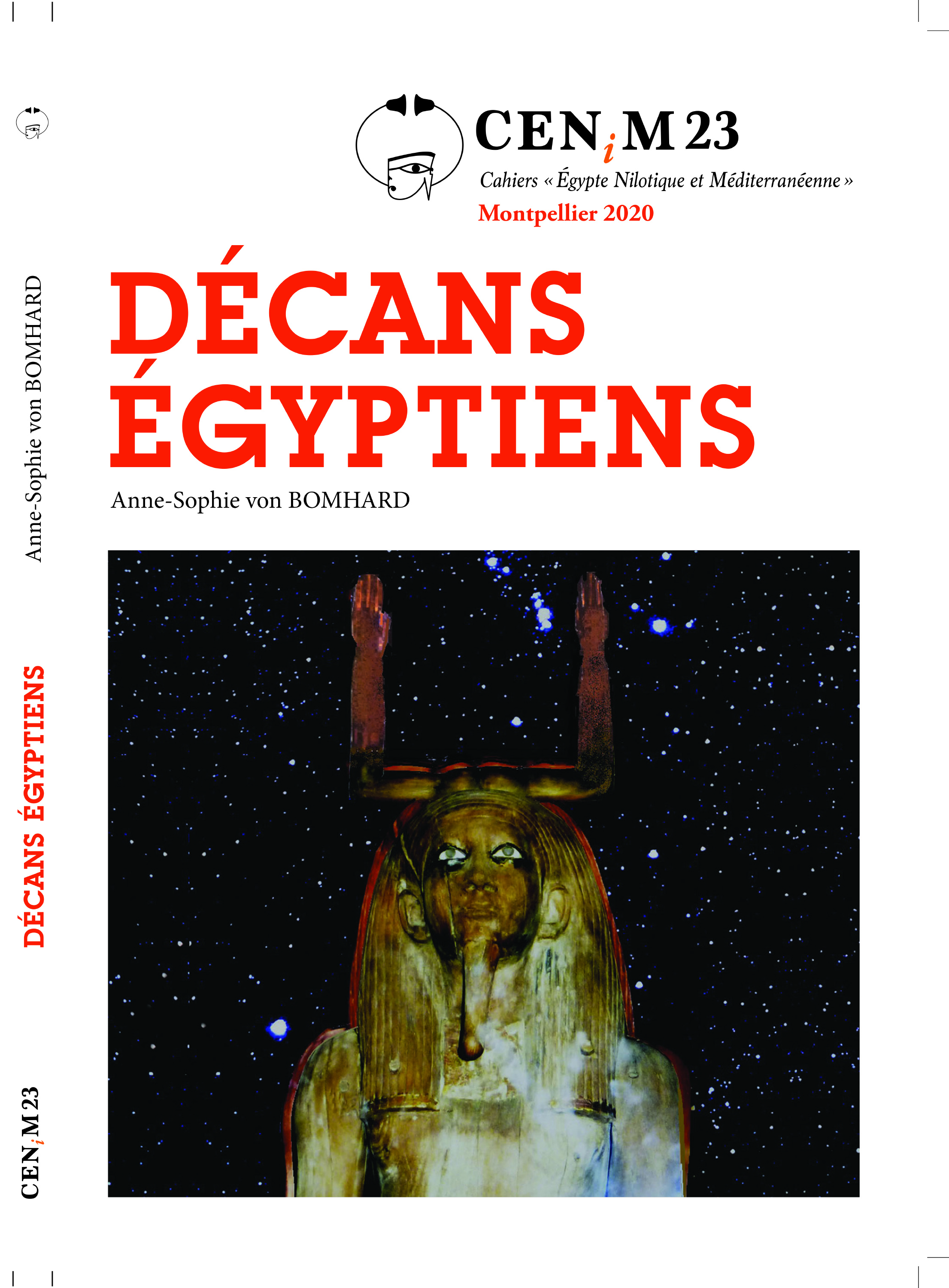 Anne-Sophie von BOMHARD DĂ©cans Ă©gyptiens, CENiM 23, Montpellier, 2020 — (2020)
Anne-Sophie von BOMHARD DĂ©cans Ă©gyptiens, CENiM 23, Montpellier, 2020 — (2020) 
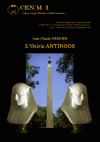 Jean-Claude Grenier L'Osiris ANTINOOS, CENiM 1, Montpellier, 2008 — (26 dĂ©cembre 2008)
Jean-Claude Grenier L'Osiris ANTINOOS, CENiM 1, Montpellier, 2008 — (26 dĂ©cembre 2008) 
TDENiM - Mise en ligne des volumes Ă©puisĂ©s : 
 Twitter
Twitter 3782300 visites - 5383 visite(s) aujourd’hui - 29 connecté(s)
© ENiM - Une revue d’égyptologie sur internet
Équipe Égypte Nilotique et Méditerranéenne - UMR 5140 - « Archéologie des Sociétés Méditerranéennes » (Cnrs) - Université Paul Valéry - Montpellier III


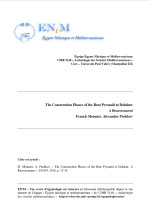
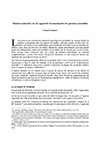
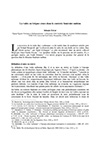
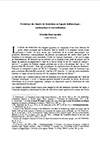
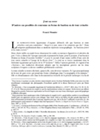

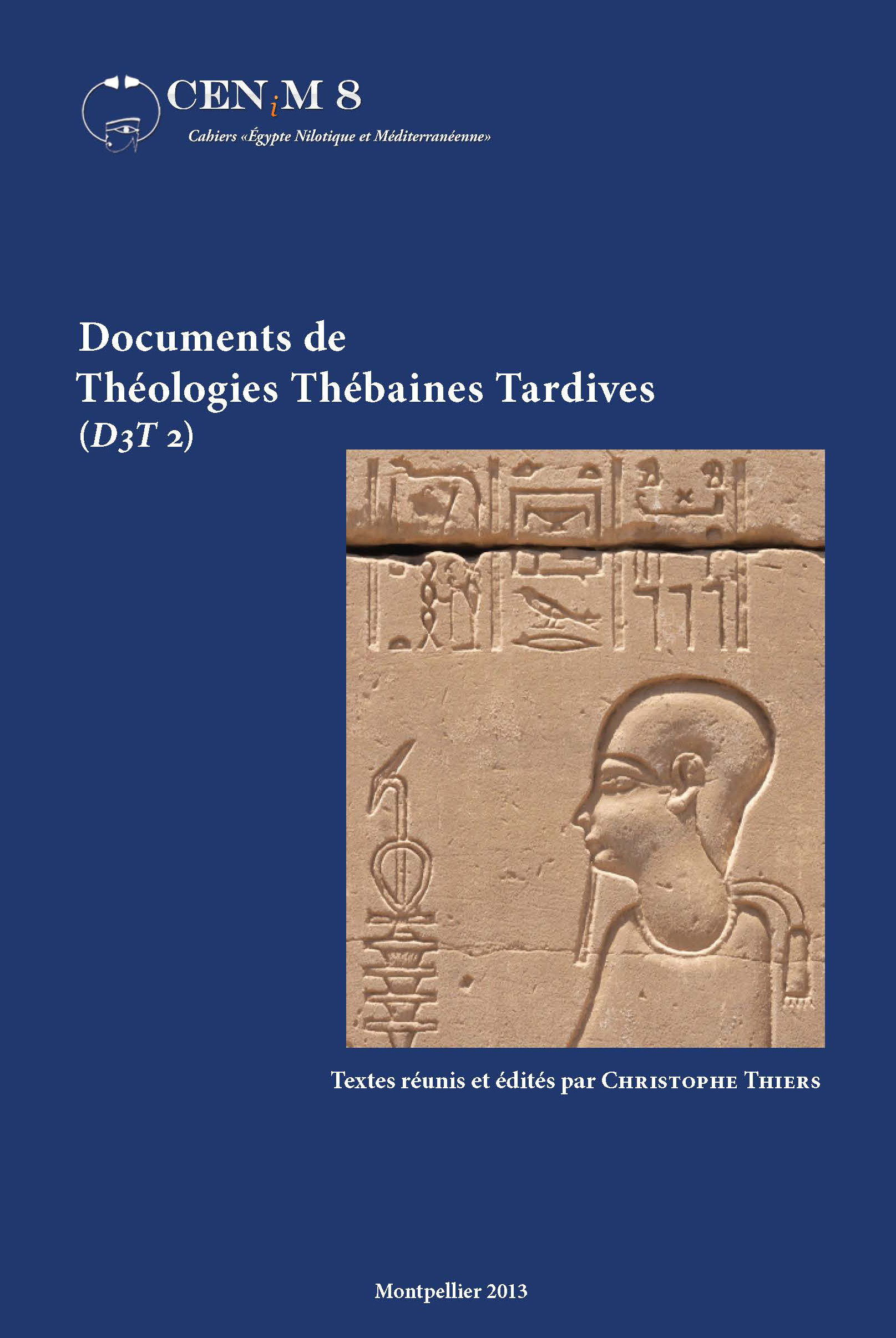

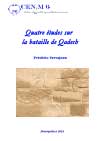
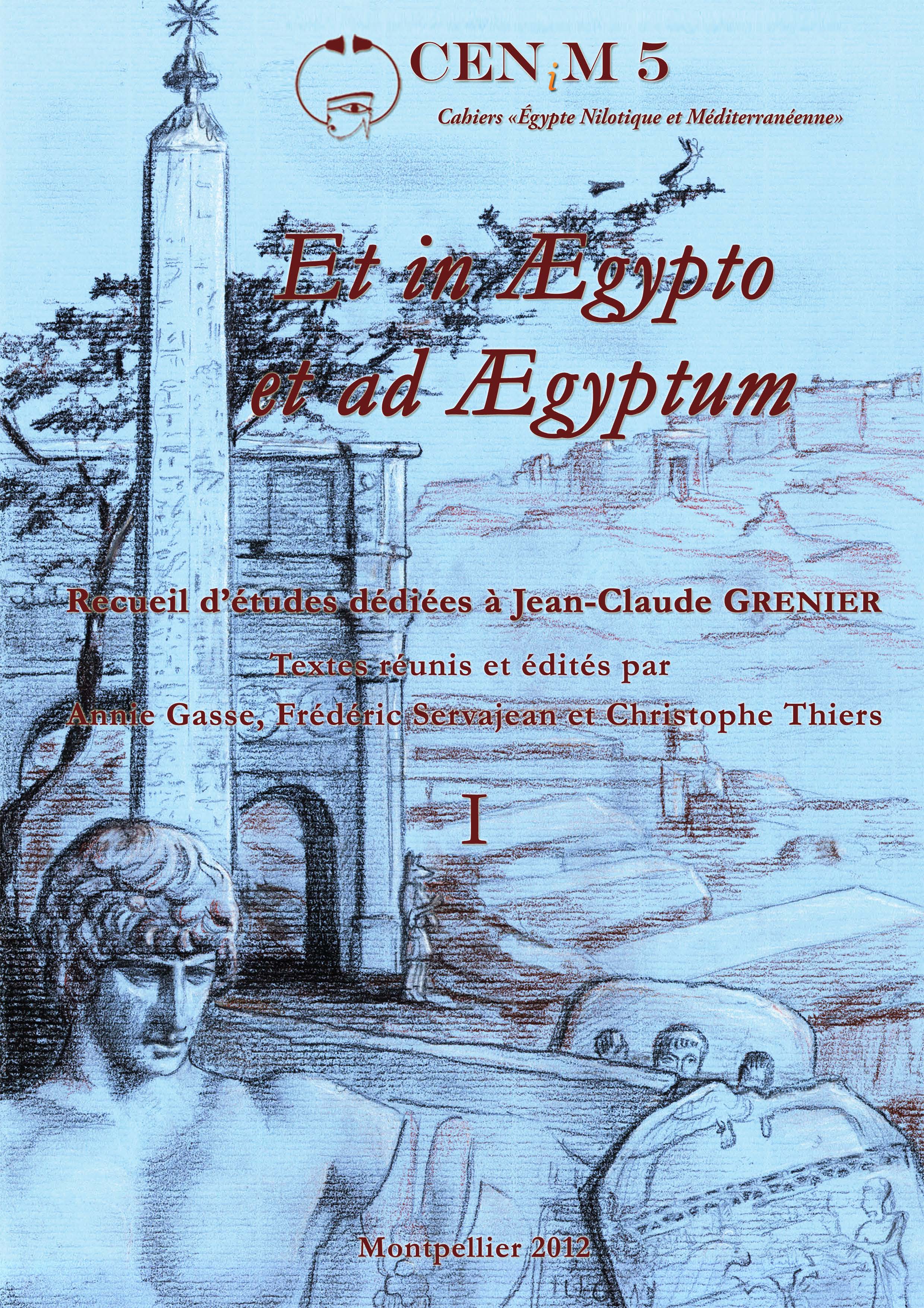
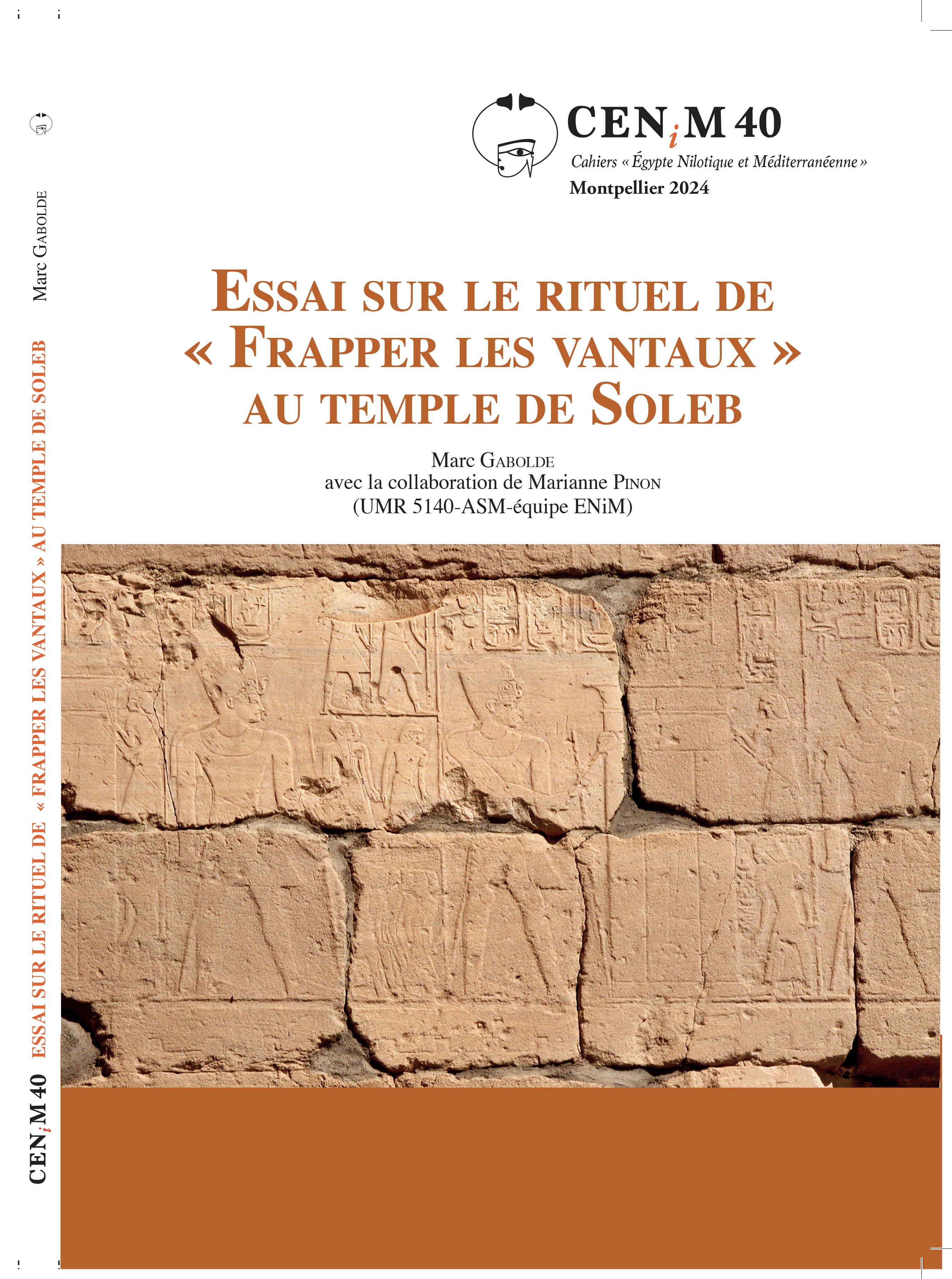
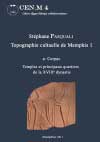
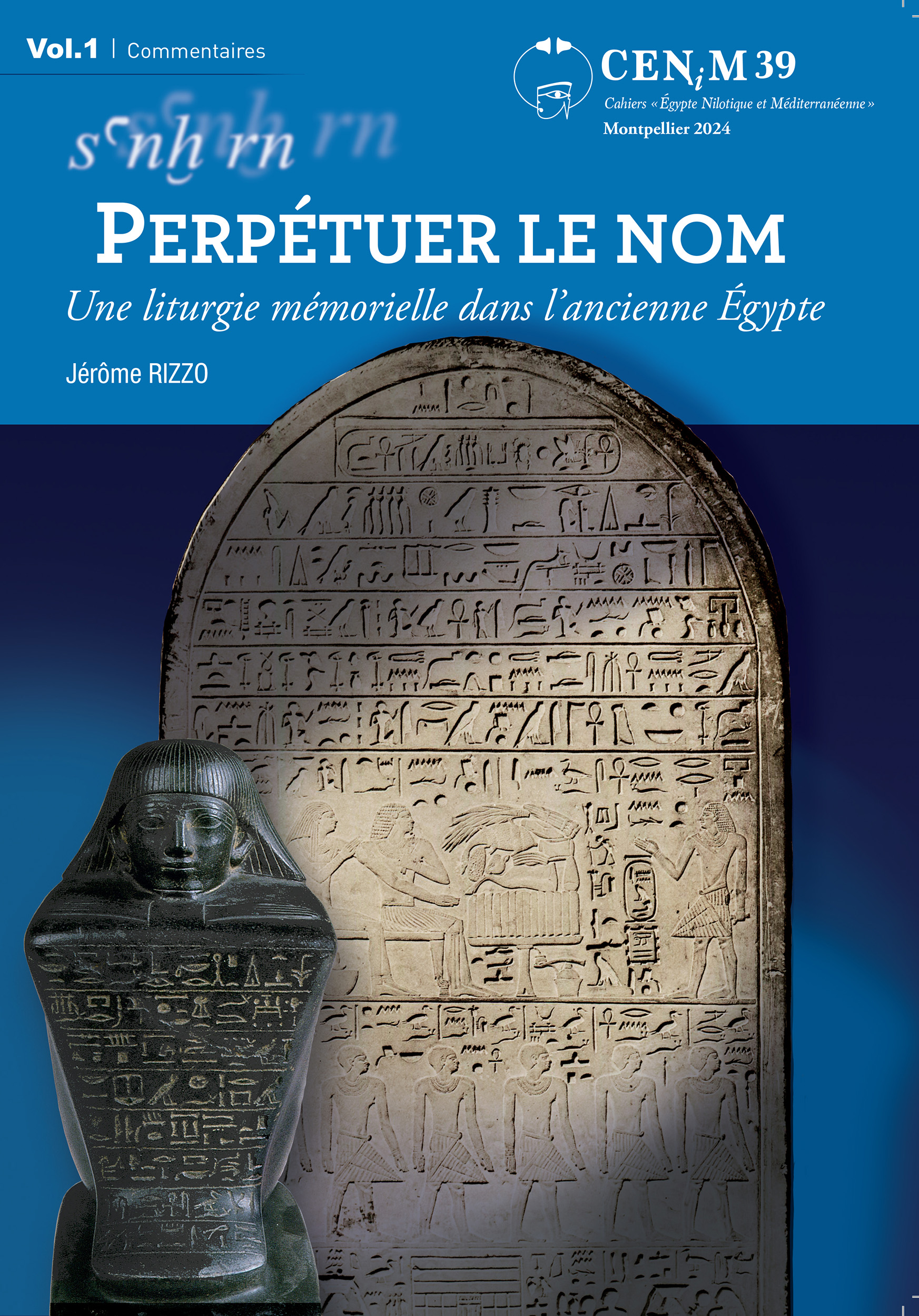
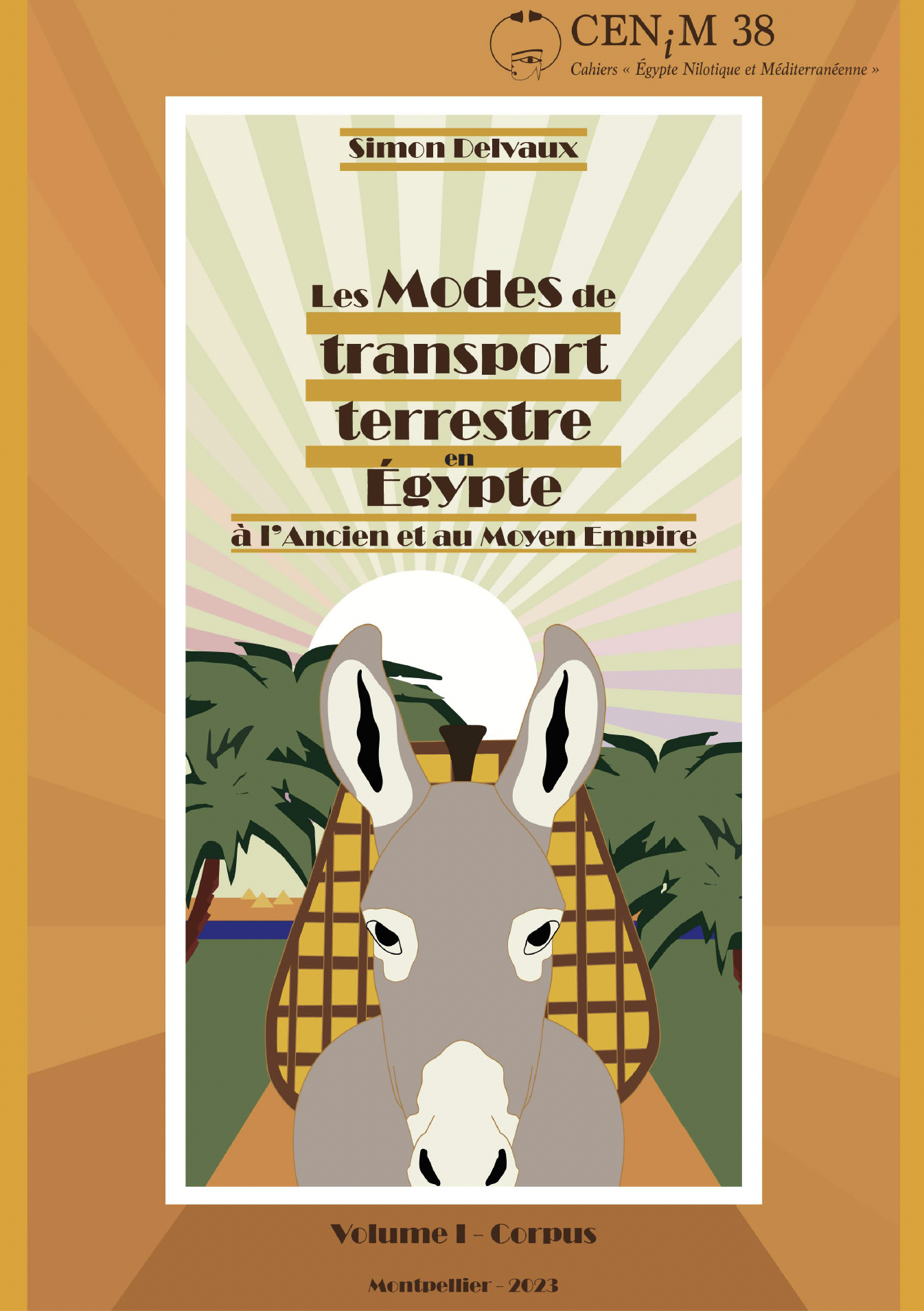
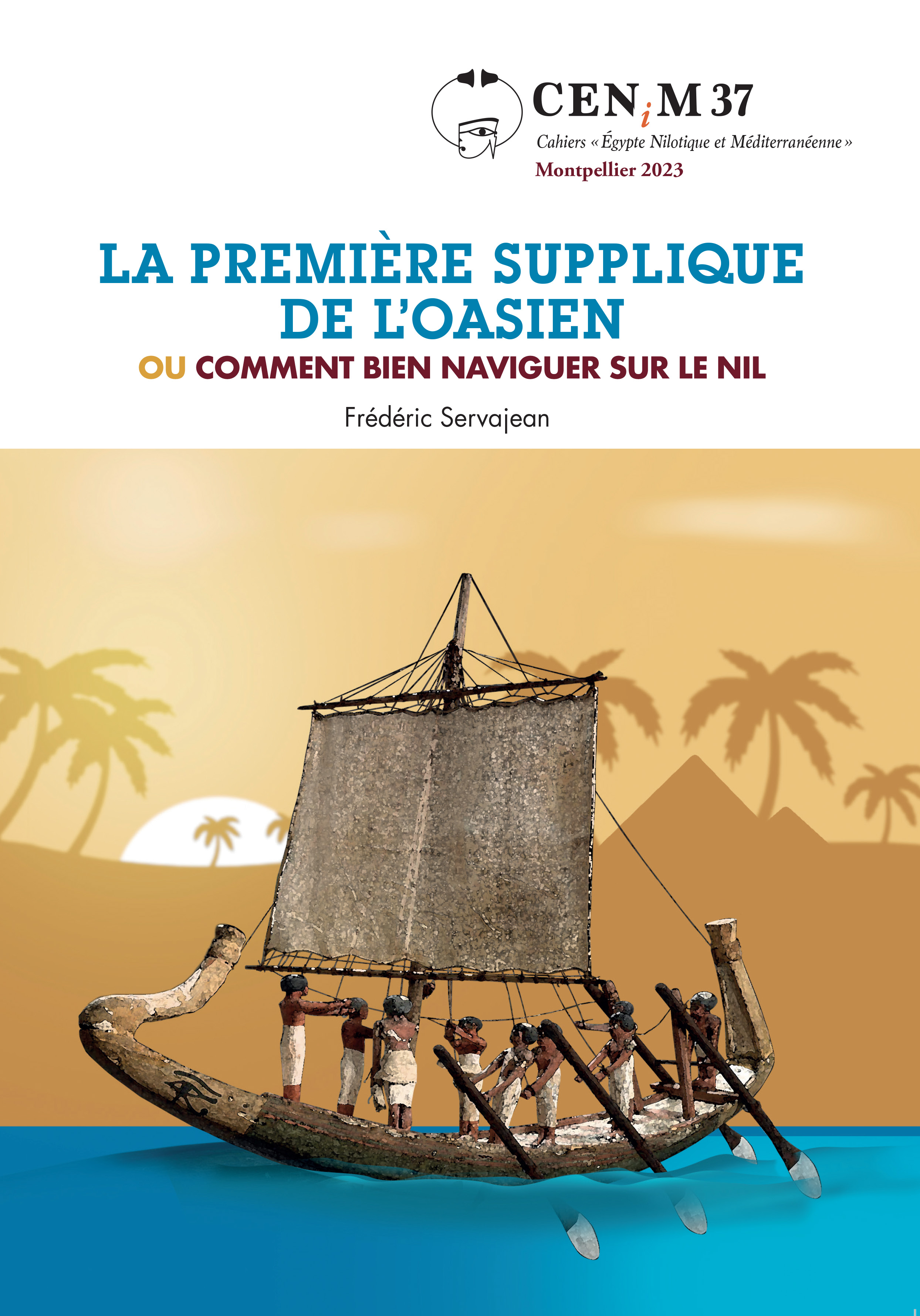
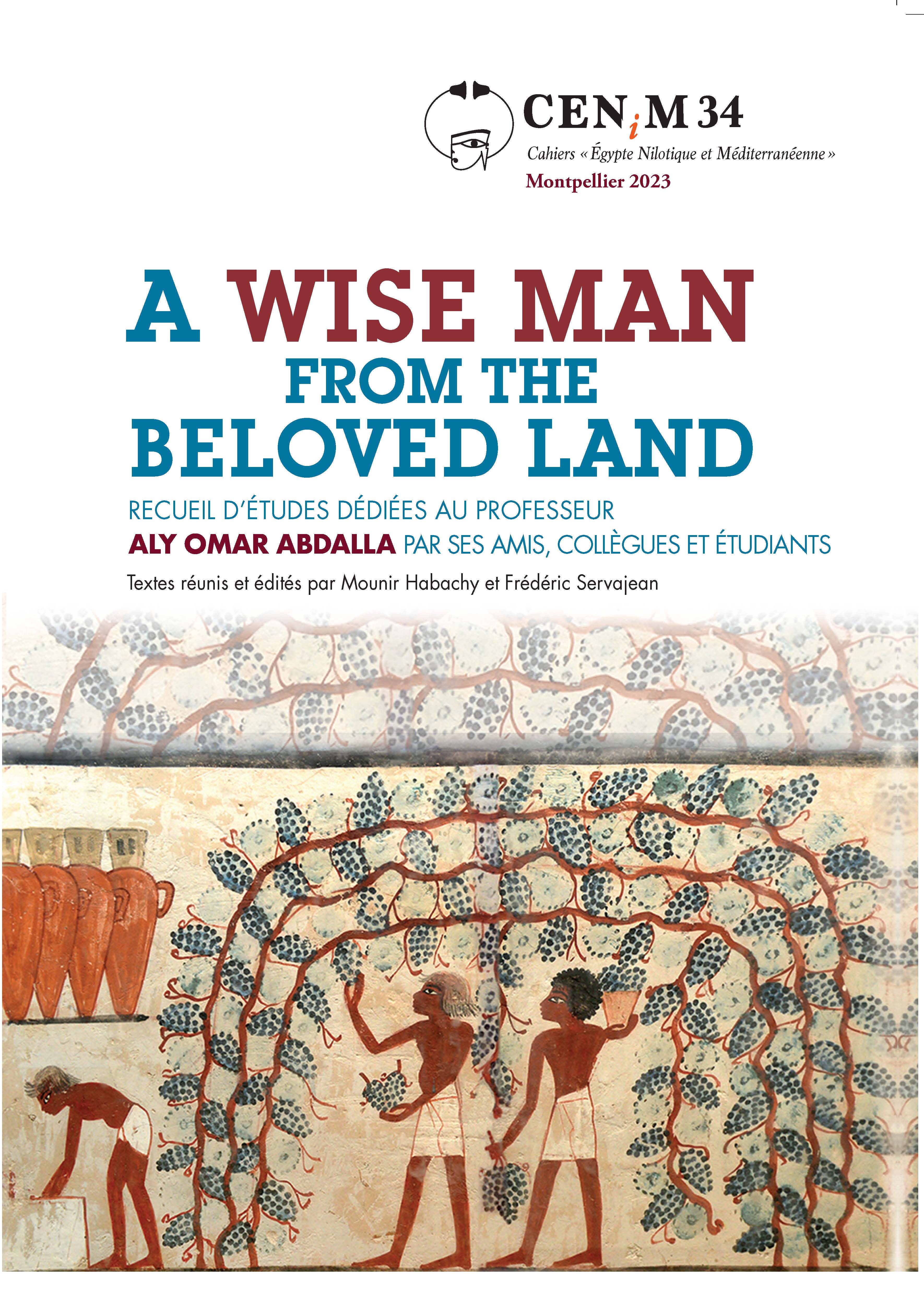
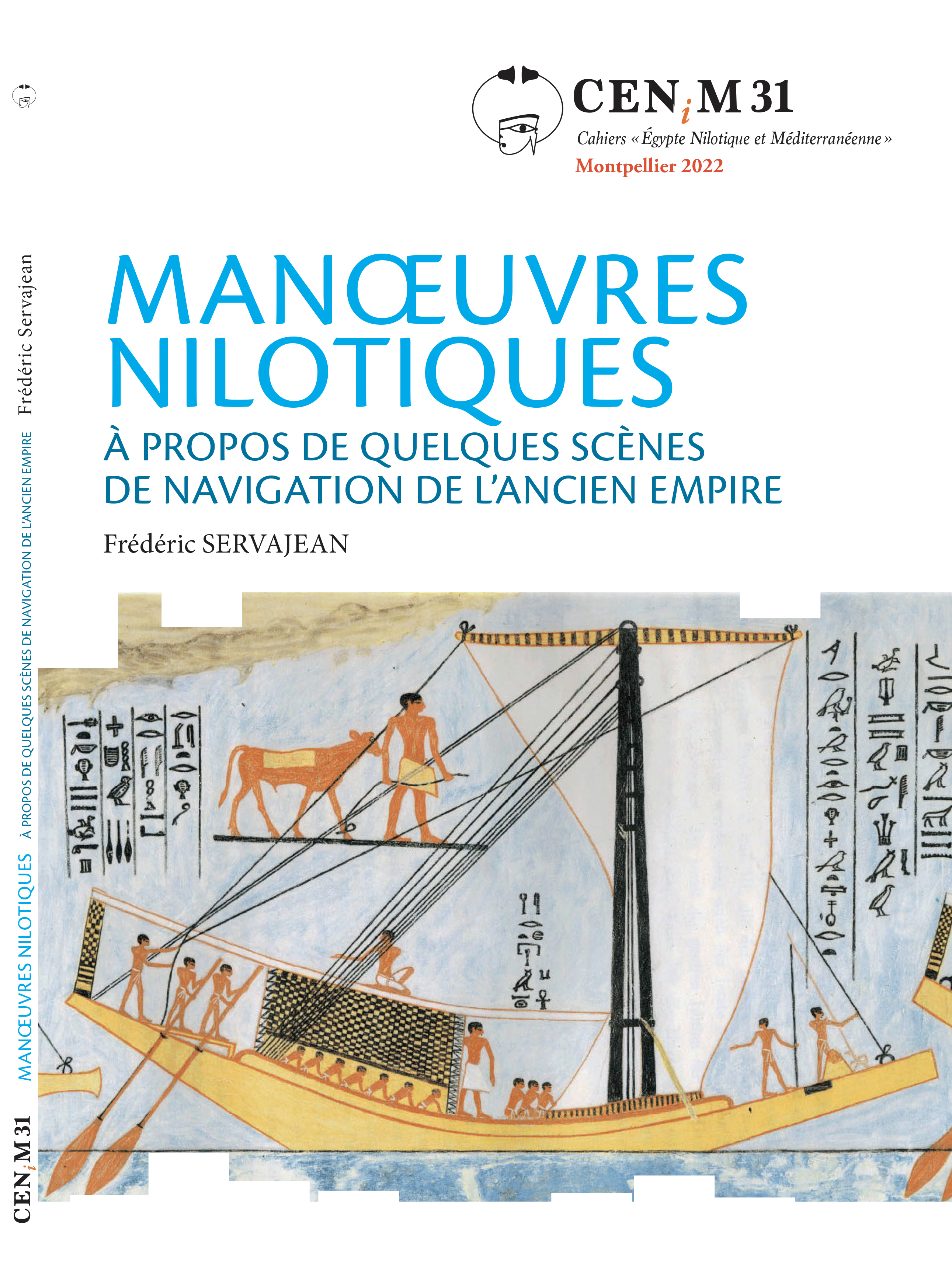
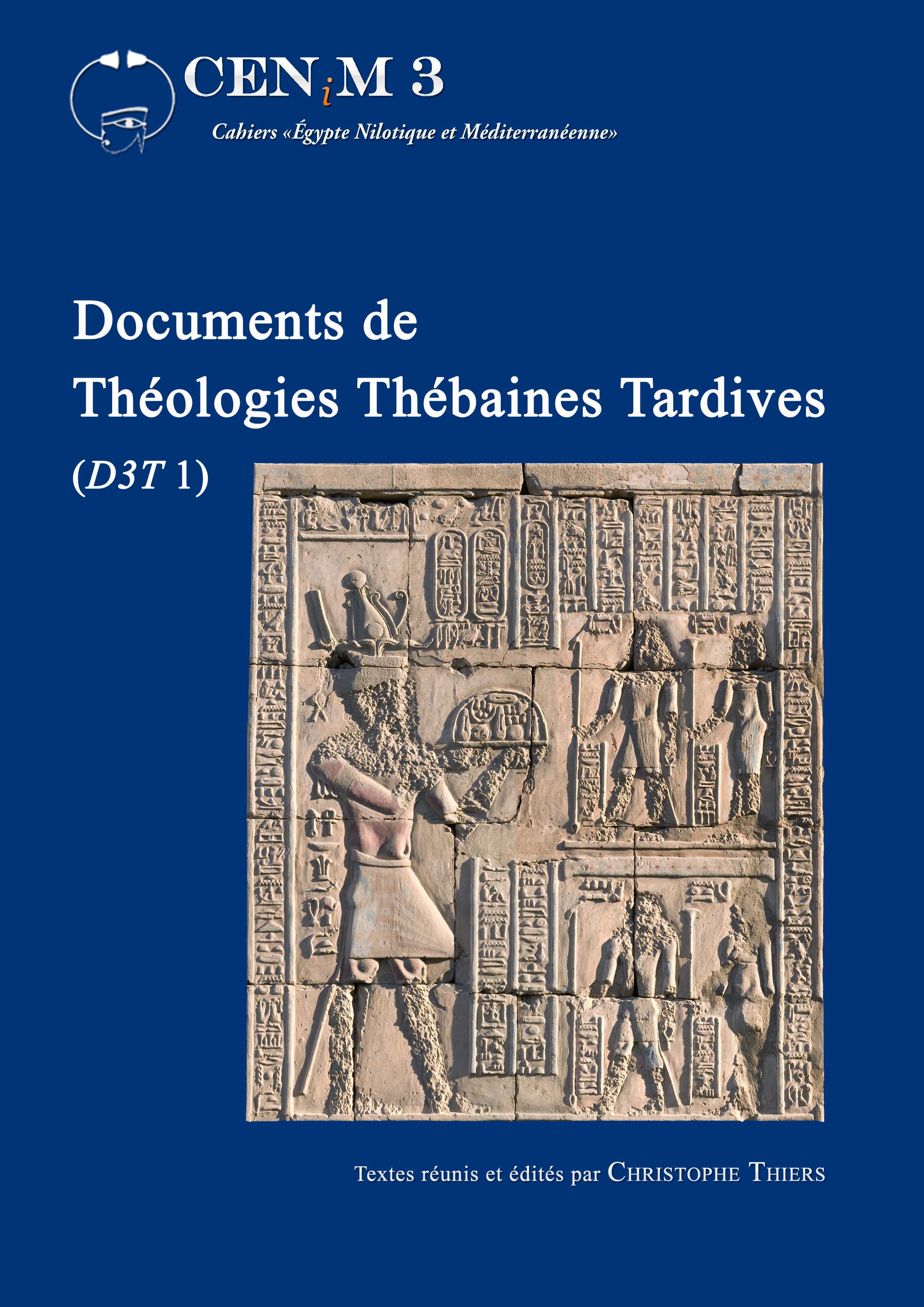
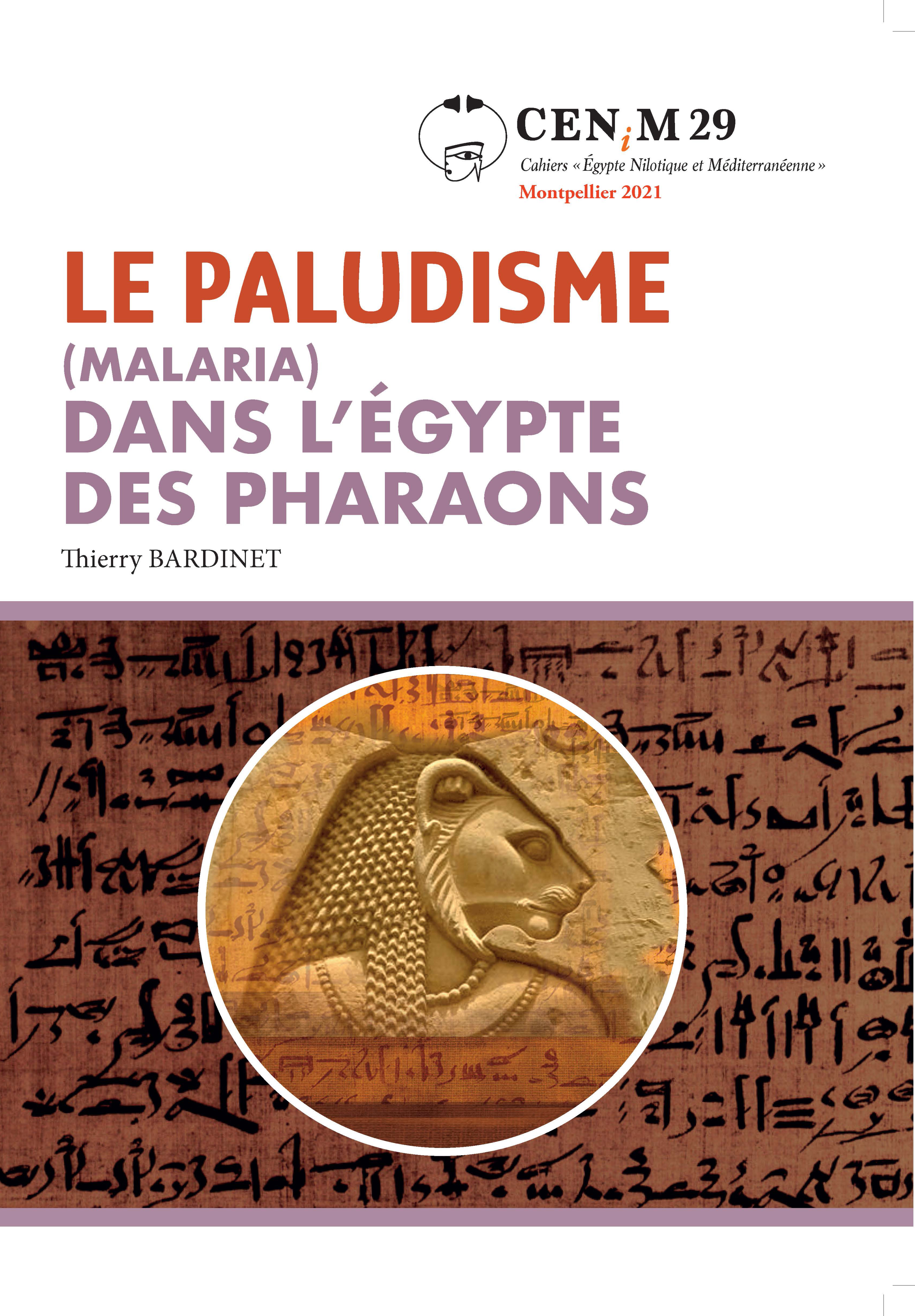
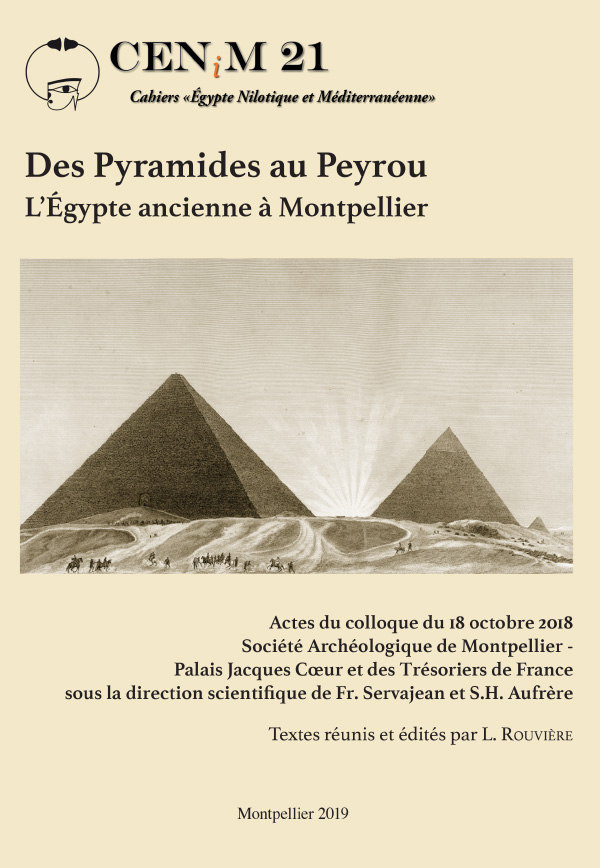
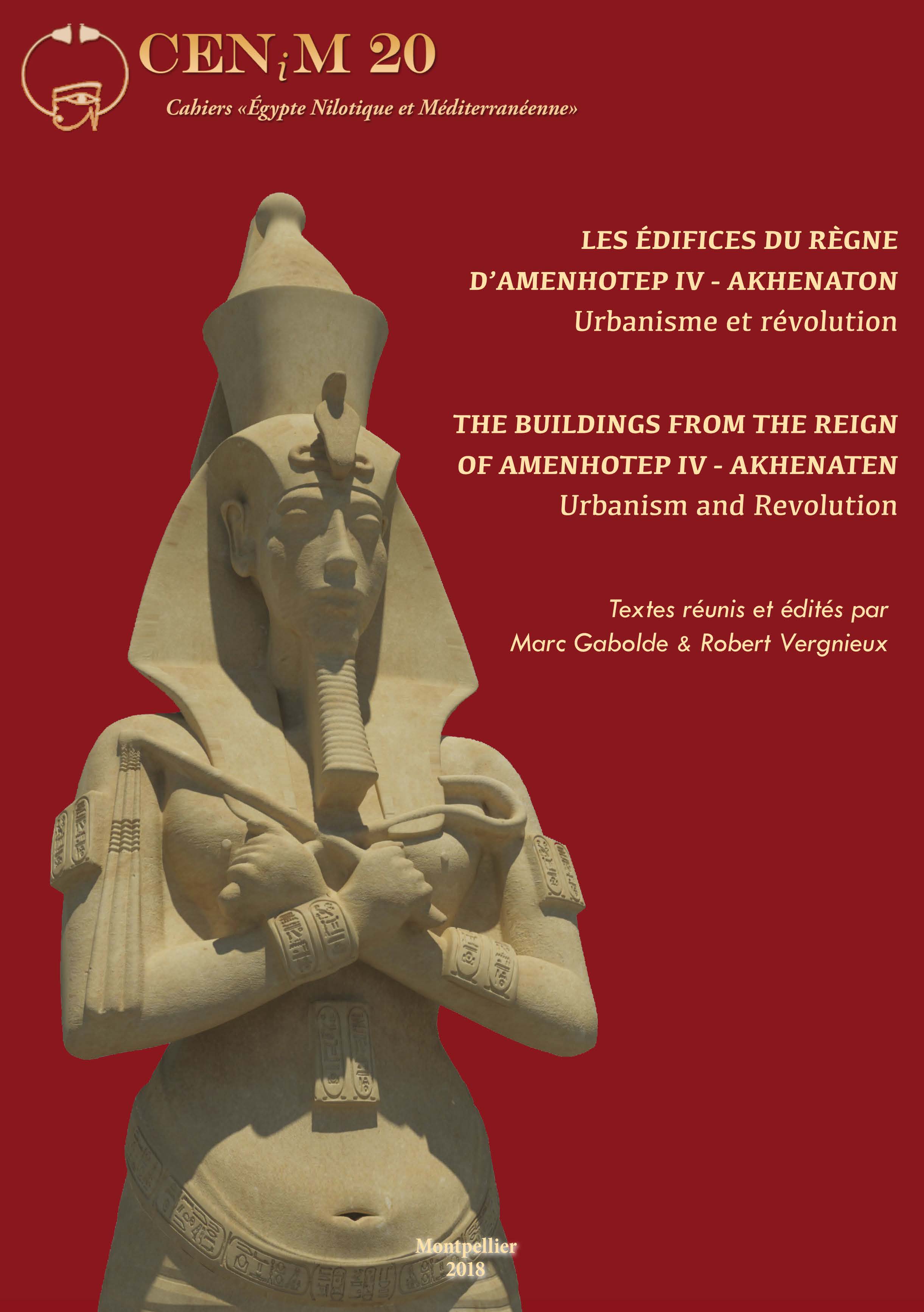
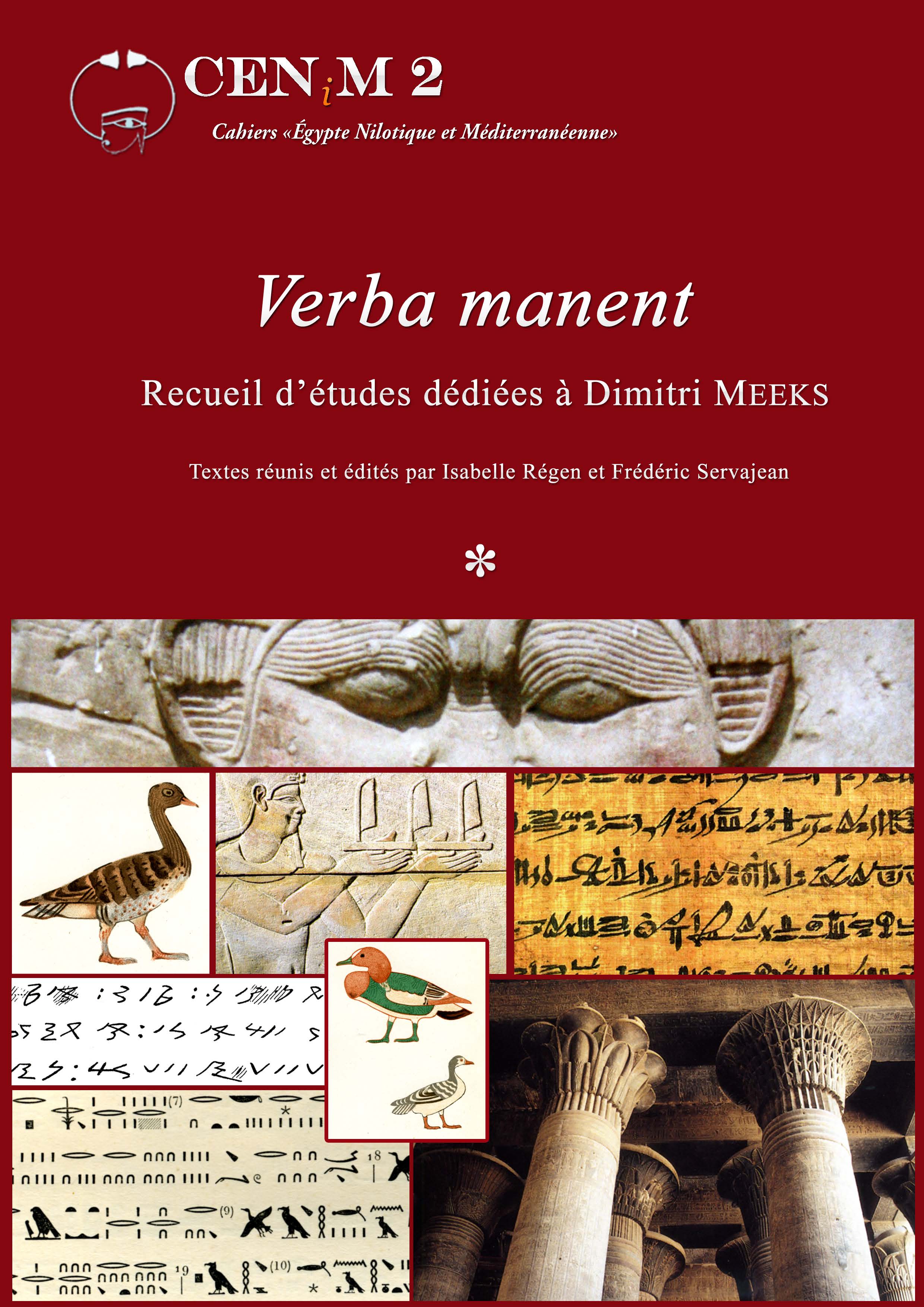
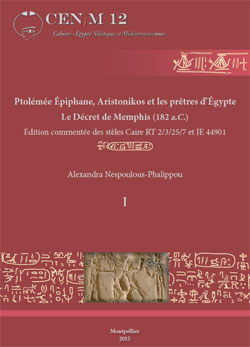
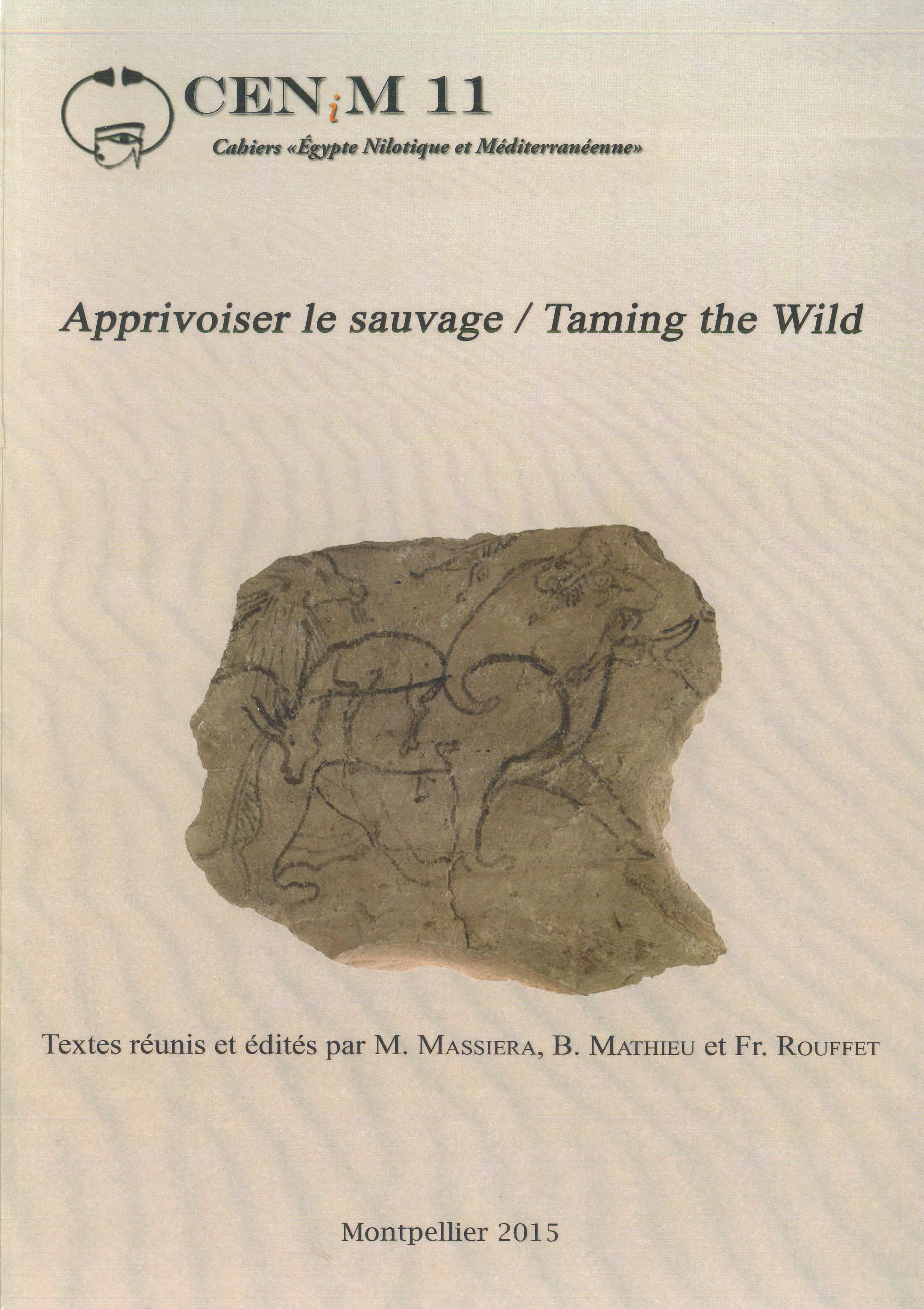
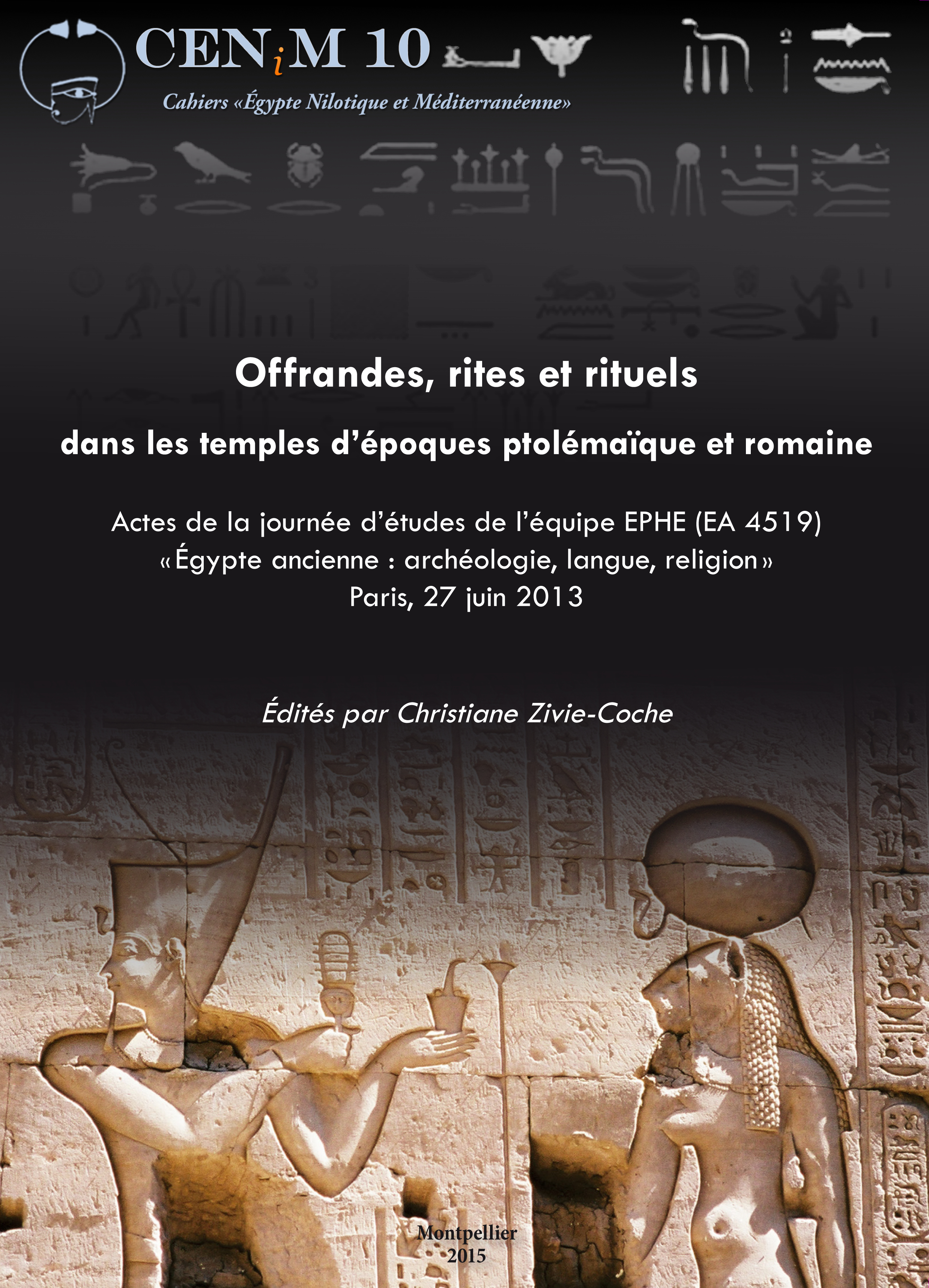
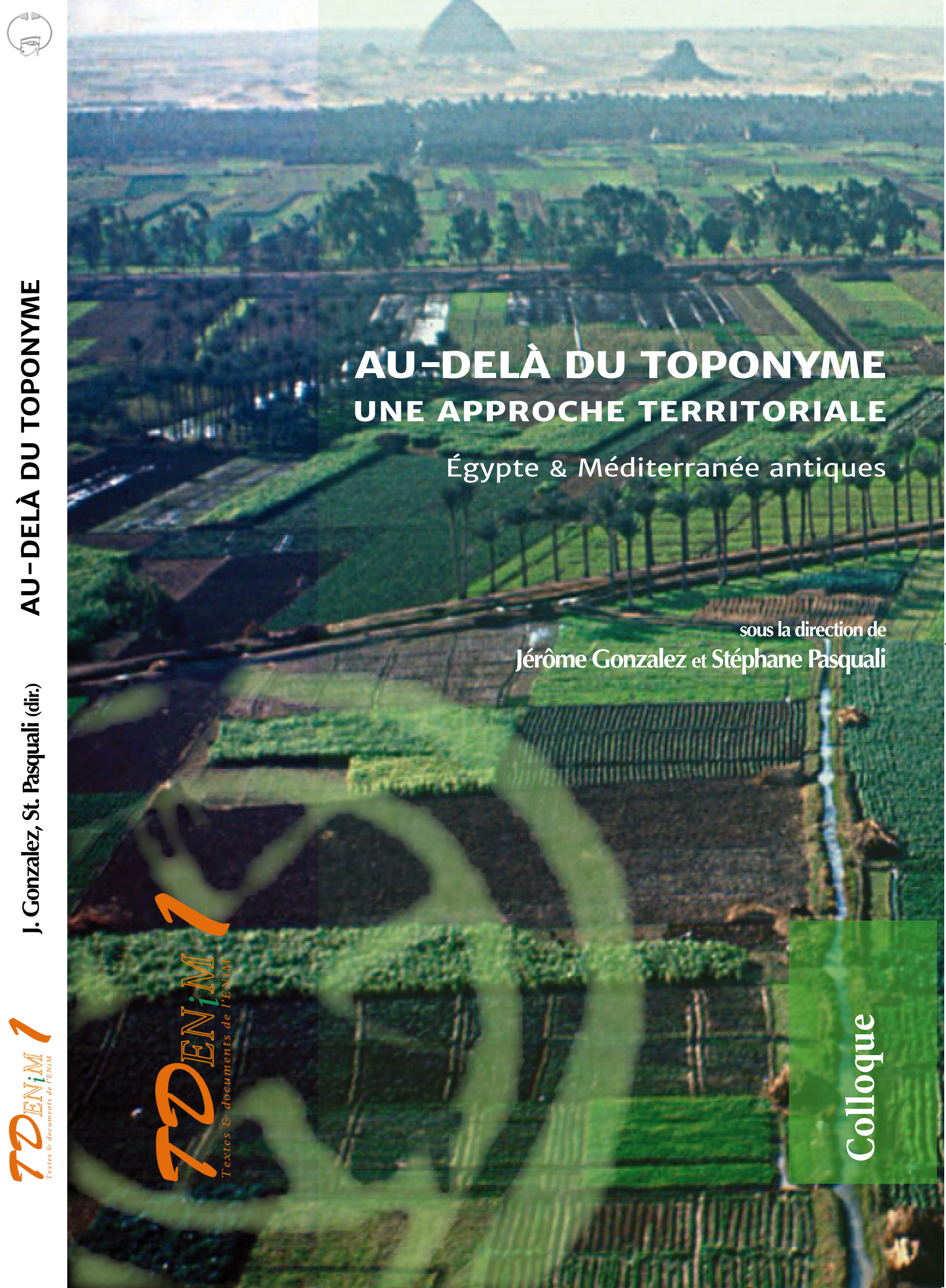
 Contact
Contact
 Abonnez-vous !
Abonnez-vous ! Équipe Égypte Nilotique et Méditerranéenne
Équipe Égypte Nilotique et Méditerranéenne UMR 5140 « Archéologie des Sociétés Méditerranéennes » (Cnrs)
UMR 5140 « Archéologie des Sociétés Méditerranéennes » (Cnrs) Université Paul Valéry - Montpellier III
Université Paul Valéry - Montpellier III